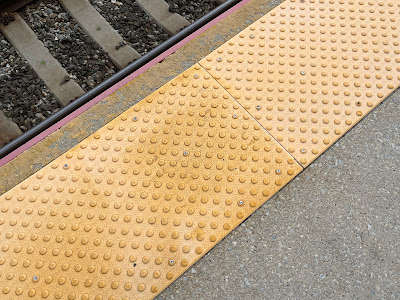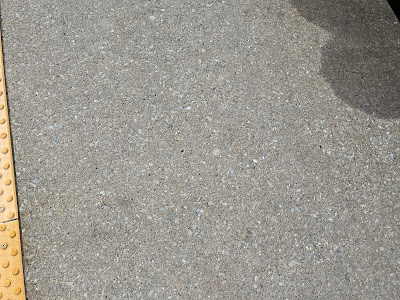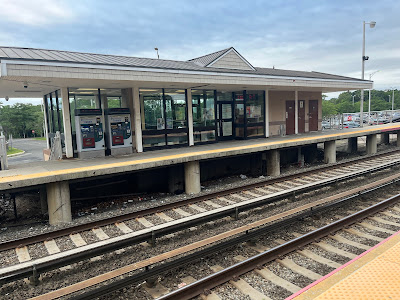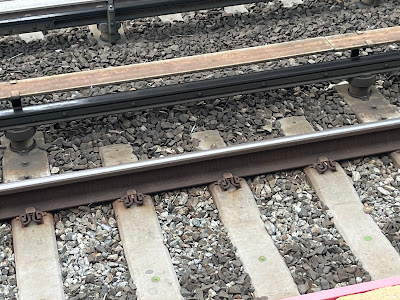Let's now take a look at the busy JAY Interlocking. Similar to it's counterpart, HALL interlocking, it serves as the second major interlocking for Jamaica Station. I like to say HALL and Jay interlocking are decently similar, both with their own unique set of quirks & characteristics.
Here's a diagram of JAY interlocking, from the handy-dandy New York City trackmap:
As you can see, JAY interlocking is extremely busy, and seams to be much less structured than HALL interlocking is.
It's difficult to understand the interlocking, especially at first, but let me try to explain the key fundamentals of the interlocking so you'll begin to understand the rest of the interlocking.
The idea, similar to what is seen at HALL interlocking, is to segregate trains so they never cross paths. Ever notice that typically speaking, westbound trains leave from tracks 1, 2, and 3 and eastbound from tracks 5, 6 , 7, and 8? While technically any train can leave from any track at Jamaica, they specifically do this for a reason, as to streamline the flow of trains.
This also explains why a majority of the trains headed towards Brooklyn typically come from the Atlantic Branch, since, the way the station is configured, makes it easier to get those trains over to the tracks headed towards Brooklyn.
You'll also notice that for much of the interlocking, westbound and eastbound traffic is actually segregated from each other, therefore the paths of an eastbound train headed towards Babylon, for example, and a westbound train headed towards Long Island City would never once have to cross paths. This speeds up the interlocking substantially and allows for more capacity.
The way the interlocking is setup also gives JAY interlocking a secret advantage, which allows two westbounds (one headed towards Penn/GCT/HPA and one to Atlantic Terminal to both leave simultaneously and never cross paths. This allowed them to do timed-transfers, which, they abolished after East Side Access, and leads to the greater flexibility of the interlocking.
Anyway, I don't think it makes sense to explain the entire interlocking like I normally do as similar to HALL, there's a lot going on and I don't think you guys want to read an entire explanation of it, but I hope that gave you a better idea of what this interlocking is about.




















































